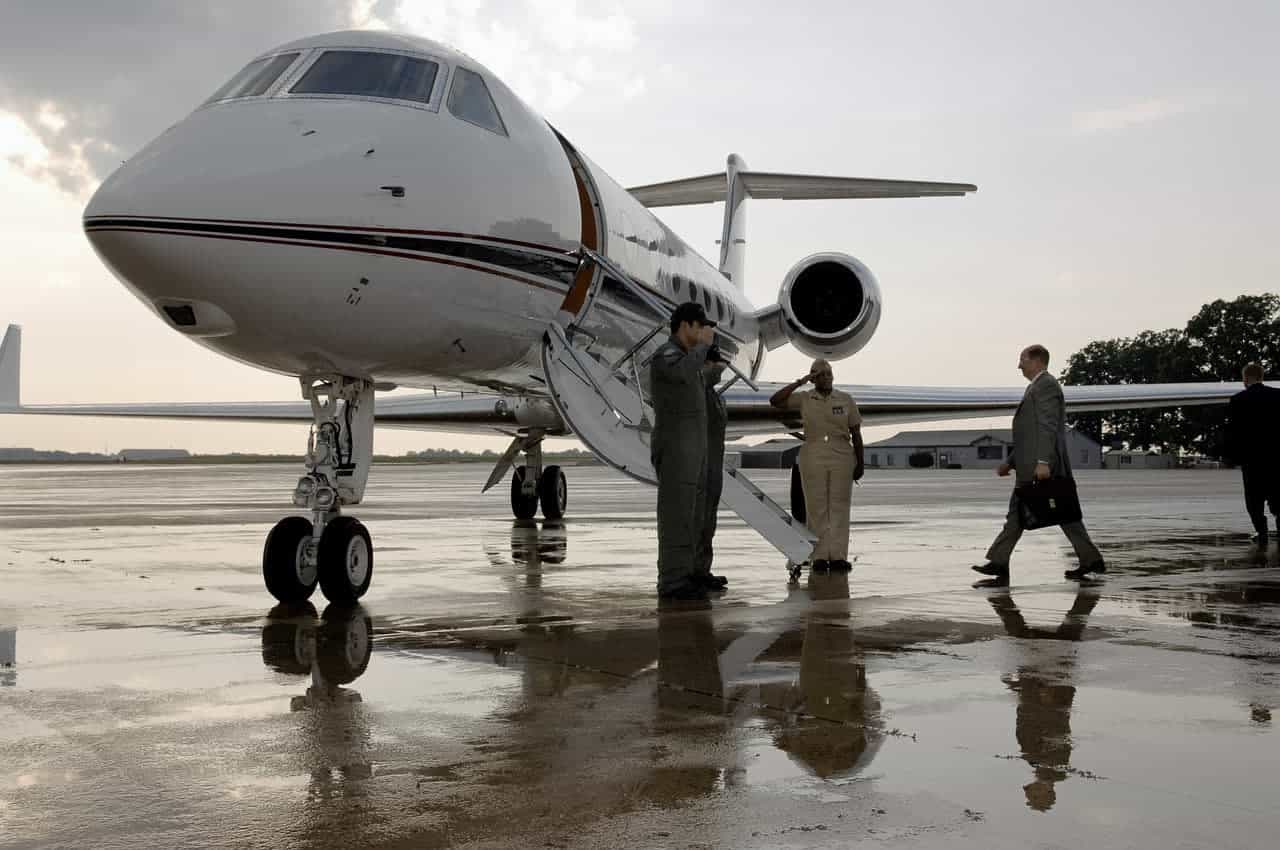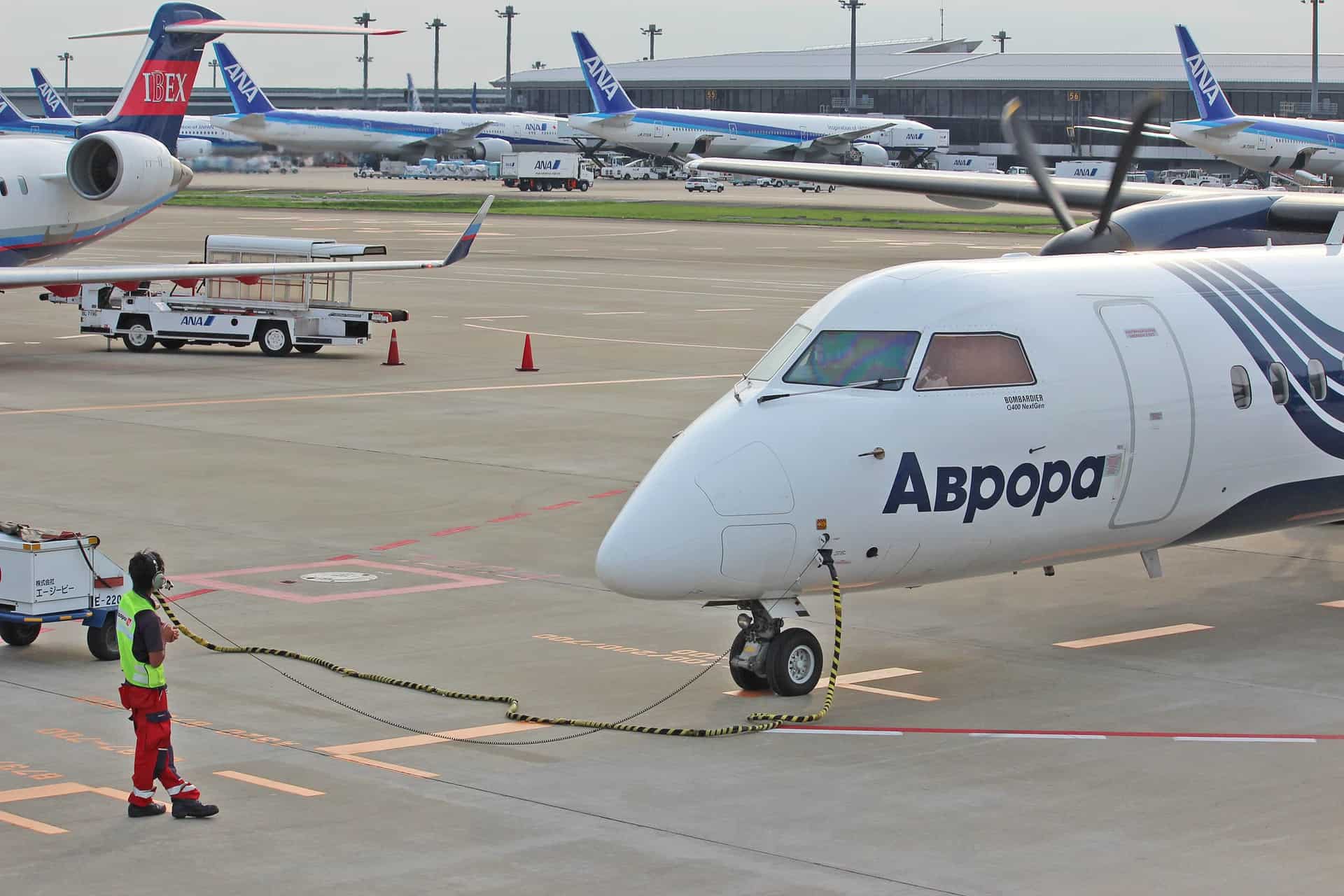It’s easy to get data on the fastest or most expensive airplanes in many categories, but what about the slowest planes? Many slow aircraft are responsible for modern aeronautic innovations. However, which powered, piloted aircraft can maintain level flying at the slowest speed?
Air travel is one of the world’s most exciting things. It is also the world’s quickest means of journey. Modern aircraft used to travel from place to place can take people within hours to different continents, countries, and oceans.
At one time, such great distances were traveled by boat on the water or by road in days and weeks. With technological progress, aircraft are only hours away from their destination. However, this was not always the case.
In the world of aviation, there are many planes that can fly at a high rate of speed. But not every plane is capable of going quickly. In some cases, it’s due to design and in others, it’s because they’re simply too slow for their own good. Regardless of the reason, these 12 planes are among the slowest airplanes in the world today.
Perhaps it’s more interesting to look at the fastest or most expensive airplanes in the world, but in some situations it’s required to fly as slow as possible. Low-flying crop dusters are one such example. Another example would be if you were to fly a vintage plane. In such cases, even if it’s not required to fly extremely slow, there will be times that you do so anyway just because it’s safe and relaxing.
Pilots call this flying at the ‘stall speed.’ To be precise, it’s when an aircraft can maintain its flight but if any lower speeds are reached then it will lose its lift. The slowest planes in the world have extremely low stall speeds at which they are still able to maneuver, albeit very carefully.
In this post, the 12 slowest aircraft in the world are being highlighted. These aircraft reach the minimum speeds that are required for that particular aircraft to remain aloft. Most of them, with a few excpetions, are not flying in this day and age anymore. The title of this post clearly explains why…
Table of Contents
- 12. PZL M-15 Belphegor – 110 knots / 120 mph
- 11. Zlín Z-XII – 81 knots / 93 mph
- 10. Slepcev Storch – 81 knots / 93 mph
- 9. Taylor J-2 Cub – 76 knots / 87 mph
- 8. Piper J-3 Cub – 76 knots / 87 mph
- 7. Braunschweig LF-1 Zaunkönig – 76 knots / 88 mph
- 6. Curtiss-Wright Junior – 70 knots / 80 mph
- 5. De Schelde Scheldemusch – 68 knots / 78 mph
- 4. Blériot XI – 41 knots / 47 mph
- 3. Solar Impulse – 37 knots / 43 mph
- 2. Ruppert Archaeopteryx – 31 knots / 36 mph
- 1. Gossamer Albatross – 15 knots / 18 mph
12. PZL M-15 Belphegor – 110 knots / 120 mph

The PZL M-15 jet-driven biplane and constructed for agricultural aviation by the Polish aviation manufacturer WSK PZL-Mielec. A metal twin-boom sesquiplane was the PZL M-15 Belphegor. It was meant to be run generally by a single pilot but also provided for two additional crews, if necessary, to serve as technicians.
The lower wings and tanks for chemicals consisted of laminates to prevent corrosion. Two broad columns containing the chemical tanks connected the upper and the lower branches. It was equipped with a fixed three-cycle gear system. The M-15 was the heaviest airplane to manufacture and was the most dangerous.
11. Zlín Z-XII – 81 knots / 93 mph

The Z-XIIs were used by both the Slovakian Air Force and the Luftwaffe during World War II. It was Zln’s first significant commercial success, with a total of 201 units constructed (a substantial number for its time when it comes to leisure aircraft).
When Germany invaded Czechoslovakia and took over the Zen plant in 1939, production ended.
Jaroslav Lonek developed the plane as a tandem two-seater low-wing aircraft. Its airframe is entirely made of wood, and the power unit is a Persy II engine that produces 45 horsepower. The Z-XII had an open or enclosed canopy and two distinct horizontal stabilizer schemes to choose from.
10. Slepcev Storch – 81 knots / 93 mph

This plane took to the skies for the first time in 1994. Slepcev’s company, Slepcev Aircraft Industry, of Beechwood, New South Wales, Australia, was the first to produce it.
The Slepcev Storch, like the original Fi 156, has a strut-braced high-wing, a two-seater enclosed cockpit with substantial glass, fixed conventional landing gear, and a single tractor engine.
It’s built of welded steel tubing, with sheet aluminum flying surfaces coated in doped aircraft fabric. The ultralight version has a wingspan of 10 m (32.8 ft), a 15 m2 (160 sq ft) area, wide flaps, and leading-edge slats. V-struts and jury struts provide support for the wings.
9. Taylor J-2 Cub – 76 knots / 87 mph

The Taylor J-2, for those unfamiliar with the (original) “Cub,” was an upgrade over the preceding E-2, with the “J” standing for Walter Jamouneau (a Taylor aeronautical engineer).
Until the new “Cub Yellow” was given, early models were red with silver trim. C. G. Taylor was not impressed with Jamouneau’s work and fired him, an interesting side note. Later, he was rehired by William T. Piper, and the rest, as they say, is history.
The E-2’s 37-40 hp (28-30 kW) continental engine powers the small 525 lb (238 kg) (empty) plane. The 115 CID air-cooled A40, weighing 144 lb (65 kg), is the simplest four-stroke airplane engine ever developed.
8. Piper J-3 Cub – 76 knots / 87 mph

The Piper J-3 is a training and sport plane that was first manufactured in 1937. Because of its popularity, the term “Cub” has become a general phrase for small aircraft.
Its small yellow taildragger is still one of aviation’s most well-known designs. J-3 Cubs and later models can still be spotted on fields all over the world. Thousands of pilots were trained in Cubs, including three-quarters of those in the Civilian Pilot Training Program.
One of general aviation’s biggest success stories is William T. Piper and Piper Aircraft. Piper adopted Gilbert Taylor’s Tiger Kitten and E-2 designs and created the Taylor and Piper J-2, then the famed Piper J-3, with Walter Jamoneau.
A total of 19,888 Piper Cubs were produced by the time production stopped in 1947. Before being rebuilt in 1975, this Cub was built in 1941 and had acquired over 6,000 hours of flight time.
7. Braunschweig LF-1 Zaunkönig – 76 knots / 88 mph
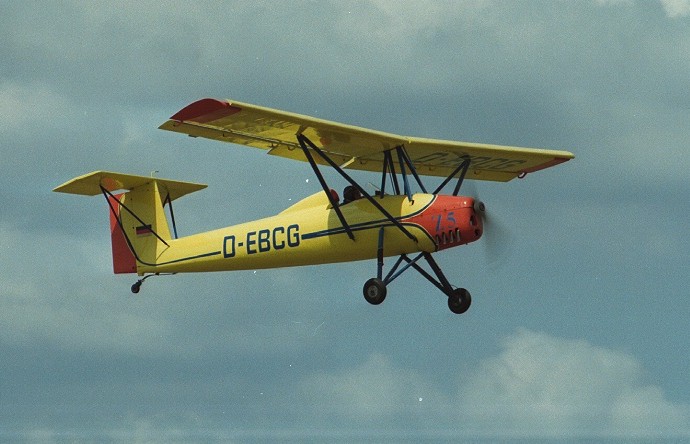
The LF-1 is a parasol wing monoplane with a high-set tailplane that can operate from a 100 m (330 ft) airstrip and is powered by a Zündapp Z 9-092 engine that produces 37 kW.
The two-piece wings have a 16-degree dihedral and are supported on either side by a pair of V-cabane struts and V-struts from half-span to the lower center fuselage. The operator can extend the whole length of the trailer/dropping ailerons manually and automatically open full-length leading-edge slats.
Long struts and oleo-pneumatic shock absorbers connect the secure tailwheel base to the fuselage.
The ailerons drooped as the flaps were lowered (max. angle 40 degrees). A Zundapp engine was an air-cooled four-cylinder engine, single-ignition that produced 51 horsepower.
6. Curtiss-Wright Junior – 70 knots / 80 mph
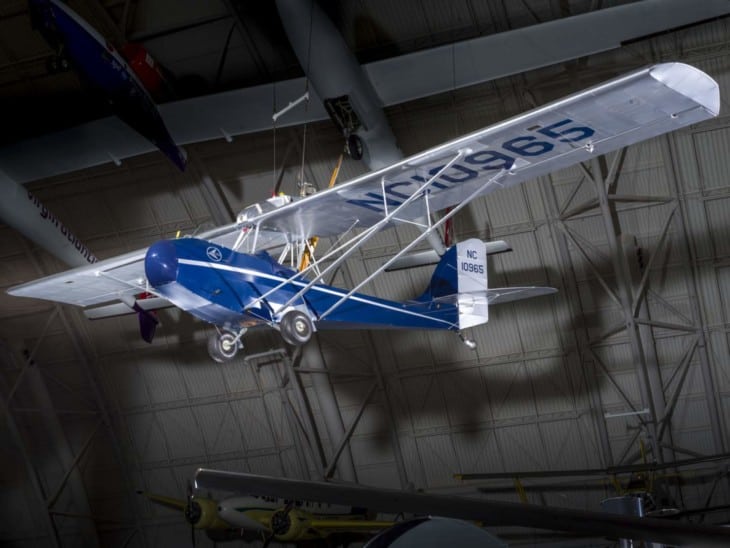
The Curtiss-Wright CW-1 Junior was a low-cost sport plane made for the general population before the Great Depression.
It was a simple and safe place to fly because of its cost, short-field capability, robust build, low handling speed, and superb vision. The Junior quickly became the most popular flivver-type plane of the early 1930s, marking a watershed moment in the “everyman” aircraft movement.
The Skeeter, subsequently called the Junior, was developed, and built by Karl H. White, Walter Beech, and H. Lloyd Child and was powered by a three-cylinder 45 hp Szekely SR-3-O engine.
5. De Schelde Scheldemusch – 68 knots / 78 mph

The Schelde’s Scheldemusch was a single-place biplane designed to be flying quickly and safely in the Netherlands. This was one of the earliest light aircraft to use a strike. The Scheldemusch was a biplane with a single bay with stalled wings equal in size and a constant chord.
It was made of double wooden spars, split-wood coated in the vulnerable areas of the front and the base between the n-shaped inter-planes. The rest of the sections were covered with cloth.
4. Blériot XI – 41 knots / 47 mph

On January 23, 1909, the English Channel-famous Blériot XI took to the skies for the first time at Issy. This plane developed the traditional tractor monoplane formula, which remained until World War I. This included monoplane wings, a tractor propeller directly coupled to the crankshaft, a hinged tilting stick and rudder pedal controls, and a covered fuselage, among other features.
The plane’s original engine was a 30-horsepower REP that powered a four-bladed metal propeller. Its engine was changed with a 22/25-horsepower Anzani and a Chauviere two-bladed propeller during testing.
Other improvements to the control system included a larger rudder and elevons at the tail assembly’s outer edge that only functioned as elevators. Their lateral function was wholly taken over by warping the wings’ trailing margins.
The ash fuselage was supported by struts and wire ties, and the shoulder-mounted branch was likewise made of wood. A central rudder and elevators at each end of fixed horizontal tail surfaces made up the tail assembly.
3. Solar Impulse – 37 knots / 43 mph

Solar Impulse isn’t the first solar plane, but it is the first to fly at all hours of the day and night, utilizing just the energy stored in its batteries. It is also the first to traverse seas, taking five days and nights to travel from Nagoya, Japan, to Kalaeloa, Hawaii.
This craft then took three days and two nights from Kalaeloa to San Francisco; and three days and nights from New York to Seville, Spain.
The purpose behind Solar Impulse’s accomplishments has always been the same — to demonstrate that if an airplane can fly for several days and nights without refueling, then clean technology can be deployed on the ground to reduce our energy usage, generate profit, and create jobs.
2. Ruppert Archaeopteryx – 31 knots / 36 mph

Ruppert Composite GmBH, a Swiss family business specializing in lightweight engineering since 1976, first released these hand-built flying machines to the public in 2010.
Even though Ruppert Composite first released the film in 2012. It gained a lot of attention on Twitter when Joe Biggs shared a video of the launch with the remark, “Would you ride one of these?” Since then, the video has gone on to gain millions of views and thousands of retweets.
The elegant body of carbon-aramid fibers, PMI rigid foam, aluminum, and stainless steel was manufactured in Europe. Robert Rupert designed the craft in 1998 at the Zurich University of Applied Sciences, which lifts off in a few ways.
Users can choose bungee launch, install an engine, and tow the vehicle with a car, in addition to the kid-approved way of running to achieve liftoff.
1. Gossamer Albatross – 15 knots / 18 mph
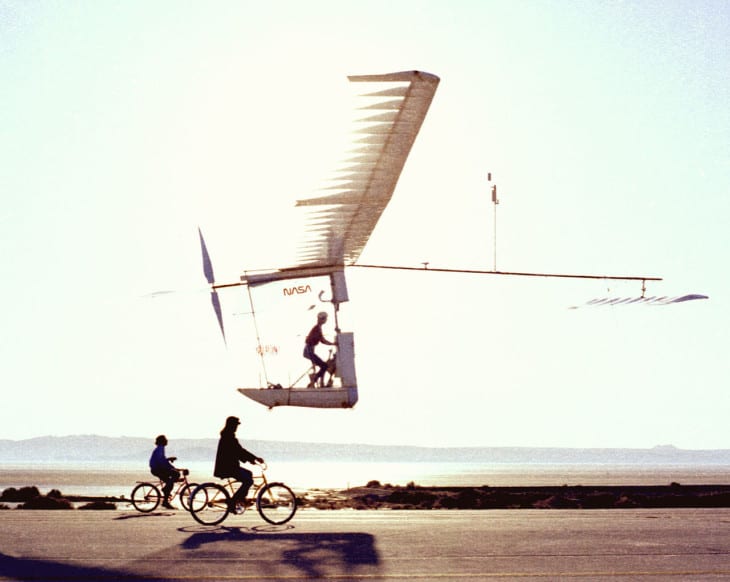

The Gossamer Albatross, piloted by Bryan Allen, became the first human-powered aircraft to fly across the English Channel on June 12, 1979.
Between Folkestone, England, to Cap Gris, Nez, France, the flight lasted 2 hours and 49 minutes and covered 36.2 kilometers (22.5 miles). A second Kremer Prize was awarded to the Albatross for its achievements.
The Albatross was more like the Gossamer Condor, which was the first successful user aircraft with the help of Dr. Paul MacCready and his colleagues.
It was constructed primarily of carbon fiber tubing and was wrapped in clear mylar. This was meant to be easily disassembled for shipping, unlike the Condor.
Related Posts











